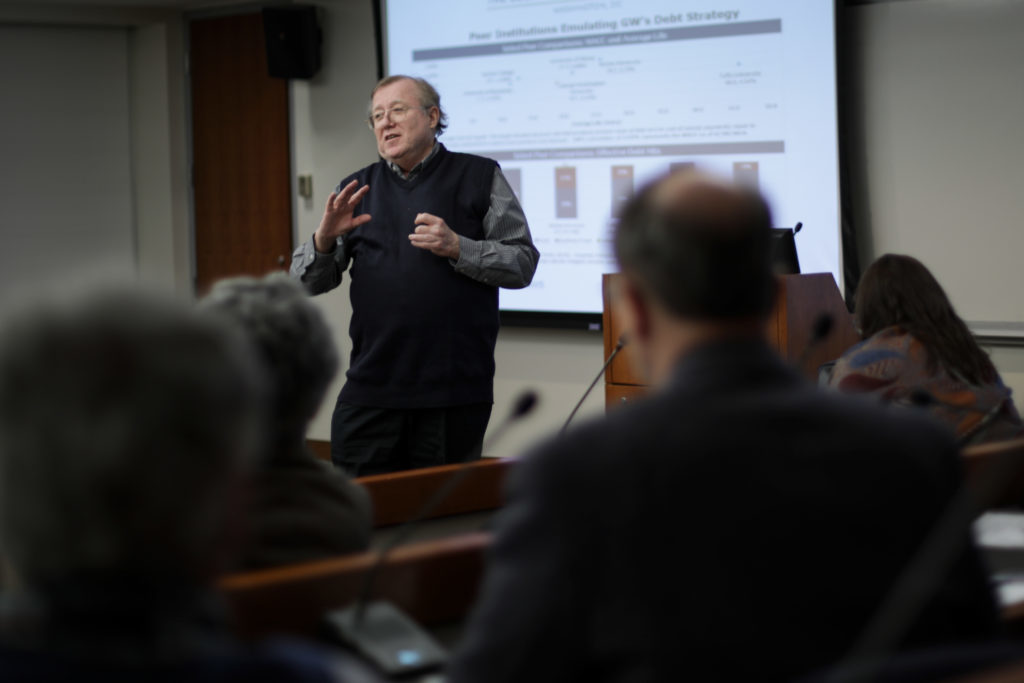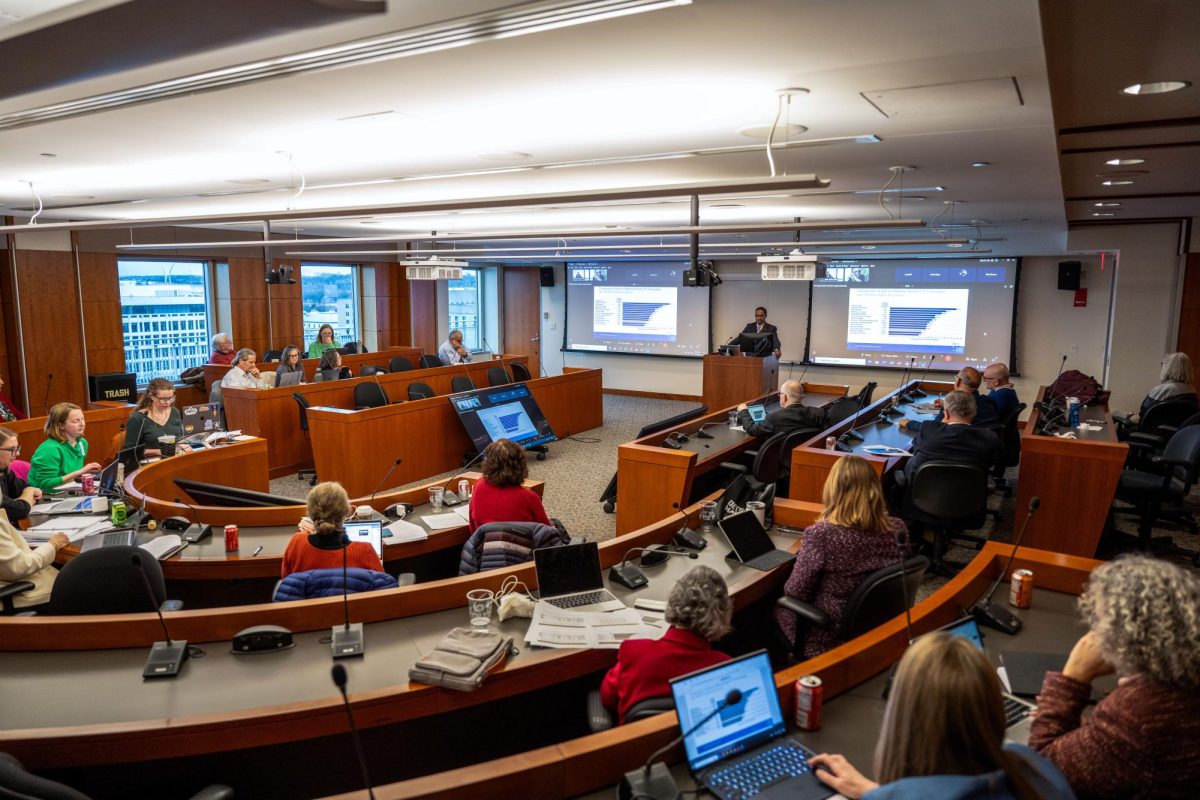Updated: April 10, 2017 at 8:50 a.m.
Officials said the University’s roughly $1.7 billion debt will drop by about $160 million by the fall.
Joseph Cordes, a professor of economics and the chair of the Faculty Senate’s finance committee, said at a Faculty Senate meeting Friday that the University will pay off $168 million in bonds by September. The repayment is part of the University’s larger debt repayment strategy, and after retiring these bonds, GW’s total debt will fall to about $1.5 billion, he said.
GW’s $1.7 billion debt has swelled over the years as University leaders have focused on building new developments on campus they said would eventually pay for themselves, like the $275 million Science and Engineering Hall. But the debt could also lead to financial issues if it continues to grow at the rate it grew in the past, even as credit agencies award the University passing grades one step above the University of Miami, Cordes said.
Last November, financial reports showed that the debt had surpassed the University’s endowment when it reached $1.7 billion, after a 14 percent increase in fiscal year 2016.
Cordes said the University issued a $350 million bond in 2015 to acquire enough funds to pay off other debts, including the $168 million bond taken out in 2012. The new, larger bond has a lower interest rate and will have to be paid off by 2046, he said.
The University issued bonds at a fixed rate, meaning the interest rate does not change throughout the life of the loans. This gives officials more flexibility when they choose to pay off debts, because they won’t be surprised by a sudden fluctuation in interest rates.
“I don’t think we are out of the woods yet but we can see the meadow,” Cordes said at the meeting.
Cordes said in an interview that about a decade ago, the University took advantage of a lower interest rates to refinance the existing debt at 3.95 percent and helped to prevent it from rising more rapidly than it originally was projected to.
At the meeting, Cordes said that when the University decides to take on more debt, officials have a plan to pay it back. The Milken Institute School of Public Health borrowed money from GW to pay for the new space in the Science and Engineering Hall where the GW Cancer Institute is housed, he said.
“It’s an internal debt and they’re going to pay it back over time and once they’ve paid it back, the money is available for the University to use for something else, and that’s a very prudent way to do it,” Cordes said.
Ann McCorvey, the deputy executive vice president and treasurer, said after the meeting that the University’s plans to retire bonds should help pay off a portion of the debt, but that it’s hard to know how large the decline will be.
She added that the important takeaway from the debt presentation was that the University’s debt repayment strategy of lowering the cost of capital and extending the amount of time it takes for bonds to be paid back is working.
“We’re looking provide the resources to grow and expand the academic message, and use debt in a prudent way,” McCorvey said.
Officials and faculty have said the construction of the Science and Engineering Hall and other building projects, like District House, has been a significant contributor to the debt, which has risen by more than $1 billion since fiscal year 2003.
Buying bonds to pay off other bonds isn’t the only way GW plans to whittle down its debt. At a Faculty Senate meeting last May, Executive Vice President and Treasurer Lou Katz told faculty that revenue from GW’s real estate holdings, like The Avenue, and research revenue will help pay off the debt.
The planned redevelopment of Rice Hall and 2100 Pennsylvania Ave. will also add additional retail spaces over the next few years, adding to the revenue stream.
Harald Griesshammer, an associate professor of physics and a member of the Faculty Senate, said in an interview that taking on debt is not always a negative, as long as officials are strategic about where they take out loans and spend money.
Griesshammer said an example of where it would make sense to take out loans is funding repairs to the Corcoran School of Arts and Design’s historic Flagg building, which is currently undergoing $80 million renovations. He said that bringing it up to safety code will cost more in the short term, but giving the building a facelift could bring in more donors and save renovation costs in the long run.
“There are some things, if you don’t invest in a timely manner, it is going to cost you later,” he said.





